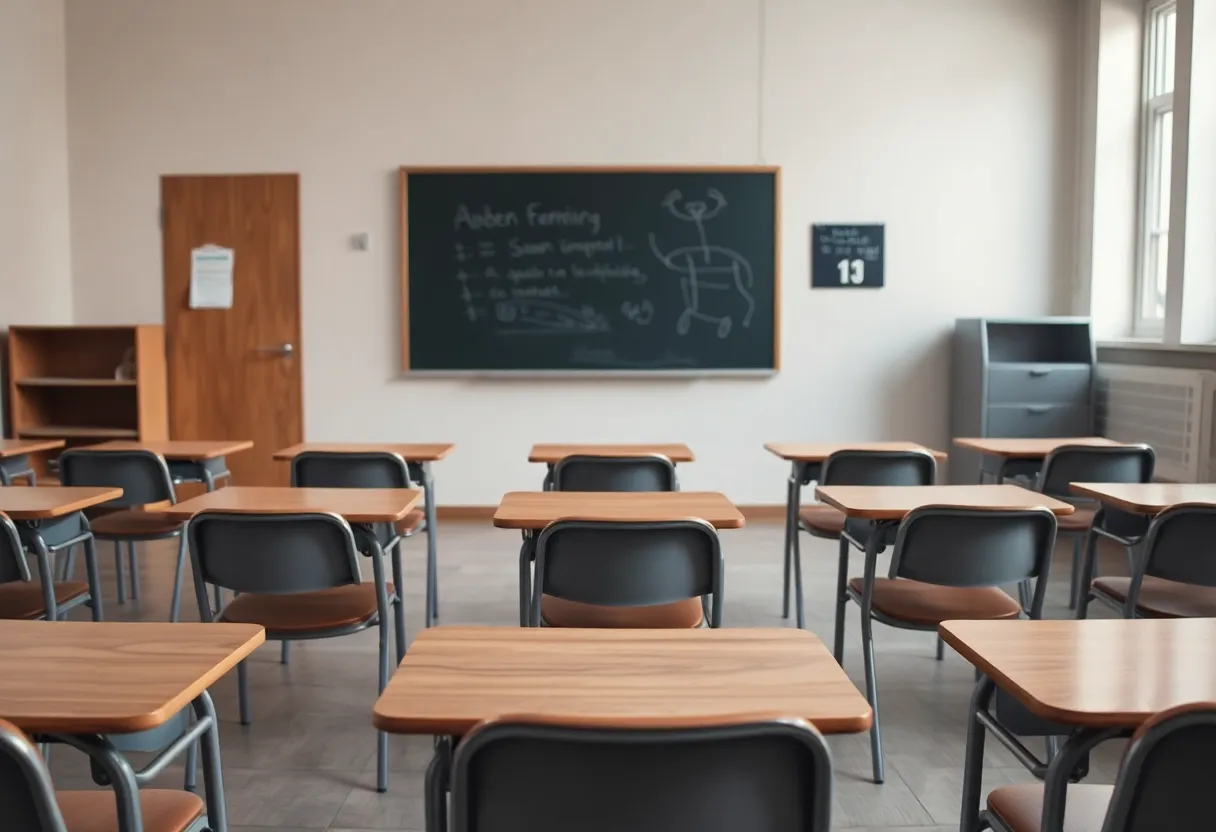News Summary
New York City is facing a severe crisis in its public school system as chronic absenteeism rises to over 34%. This alarming trend is attributed to lenient grading policies and a lack of accountability for students. With more than 300,000 students affected, educators argue that the current environment has diminished motivation and engagement in education. Efforts are needed to re-establish rigorous attendance policies to improve outcomes and address the ongoing issues that have emerged since the pandemic.
New York City is experiencing a significant crisis in its public school system as chronic absenteeism has surged to alarming levels, a development linked to controversial grading policies and a lack of accountability for students. Recent statistics indicate that over one-third of students in New York City were classified as “chronically absent” during the last school year, with absenteeism rates climbing from 26.5% in the 2018-19 school year to 34.8% for the current academic year, affecting more than 300,000 students.
This growing trend in absenteeism has been exacerbated by lenient grading policies implemented by the Department of Education, which aimed to promote equity but have resulted in schools effectively making attendance optional. Under these new rules, many students are receiving passing grades without the need for consistent classroom participation. This policy shift can be traced back to the prior administration of Mayor Bill de Blasio, which minimized disciplinary measures for absenteeism, a trend that has continued under Mayor Eric Adams, who maintains remote learning policies that prevent penalizing students for absences.
As the United Federation of Teachers holds elections to select its president, Michael Mulgrew, who has served since 2009, is running for another term. Under Mulgrew’s leadership, there has been a perceived ongoing decline in accountability within the school system. Critics, including educators like Mike Dowd, have called for a return to more traditional forms of discipline in education, arguing that current grading policies have fostered an environment where students feel disincentivized to attend school and engage in their education.
Many schools now offer a minimum passing grade of 55% for students who submit incomplete or missing assignments, further encouraging absenteeism and disengagement. Approximately 30% of schools in the city are reported to lower attendance standards, allowing students to be marked present simply by attending one class per day. Additionally, recent changes have allowed for AI-generated work to qualify for missed assignments, further diluting educational standards.
The decline in attendance is compounded by a lack of transparency in attendance data. The Department of Education has restricted access to this information, making it difficult for parents and teachers to obtain accurate records of student attendance. Research from educational experts indicates that lenient grading practices negatively impact student learning by diminishing the motivation to engage consistently in their education and subsequent academic achievement.
Despite New York City boasting the highest per-student education spending in the nation at $36,293, its students continue to produce mediocre test scores. Chronic absenteeism has been linked to detrimental educational outcomes such as lower grades and increased dropout rates. Although there have been slight improvements from the peak of 40.7% absenteeism during the pandemic, current statistics indicate that the issue remains well above pre-pandemic levels.
In areas like Buffalo, Rochester, and Syracuse, absenteeism has risen significantly as well, demonstrating that this issue is not confined to New York City alone but reflects broader trends in the state. With absenteeism rates climbing in part due to lenient parental attitudes towards education and state policies that de-emphasize attendance requirements, education experts agree that re-establishing rigorous attendance policies is imperative for improving student outcomes.
Efforts to curb the rising absenteeism rates include the implementation of mentorship programs and other supportive services aimed at addressing barriers to attendance. Notably, charter schools have reported success in managing absenteeism levels through rigorous accountability measures. The administration of Mayor Adams insists that progress is being made in addressing chronic absenteeism and continues to explore strategies to enhance student attendance and education quality across the city’s schools.
Deeper Dive: News & Info About This Topic
HERE Resources
New York State to Implement Universal Free School Meals by 2025







